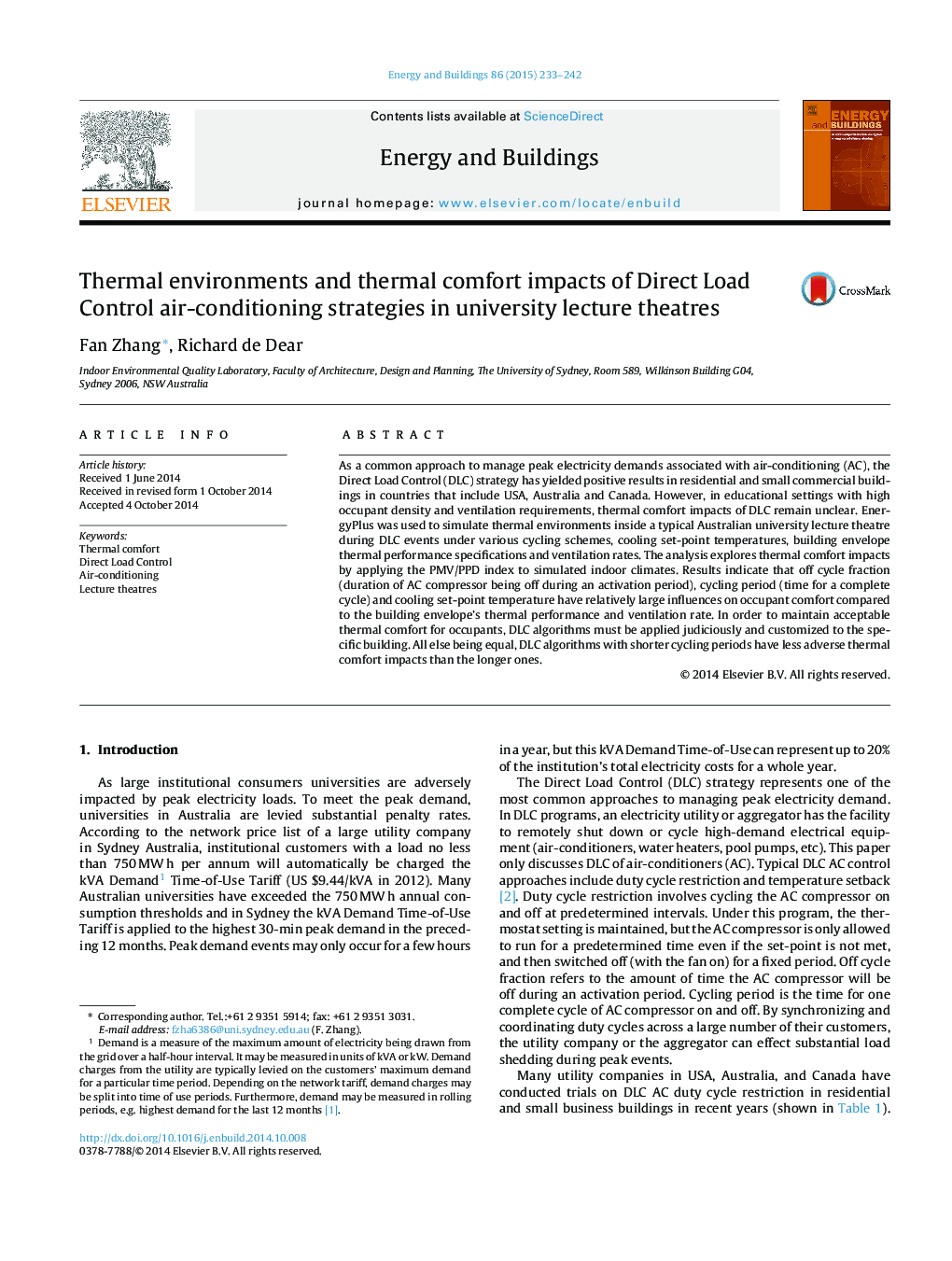| Article ID | Journal | Published Year | Pages | File Type |
|---|---|---|---|---|
| 6732704 | Energy and Buildings | 2015 | 10 Pages |
Abstract
As a common approach to manage peak electricity demands associated with air-conditioning (AC), the Direct Load Control (DLC) strategy has yielded positive results in residential and small commercial buildings in countries that include USA, Australia and Canada. However, in educational settings with high occupant density and ventilation requirements, thermal comfort impacts of DLC remain unclear. EnergyPlus was used to simulate thermal environments inside a typical Australian university lecture theatre during DLC events under various cycling schemes, cooling set-point temperatures, building envelope thermal performance specifications and ventilation rates. The analysis explores thermal comfort impacts by applying the PMV/PPD index to simulated indoor climates. Results indicate that off cycle fraction (duration of AC compressor being off during an activation period), cycling period (time for a complete cycle) and cooling set-point temperature have relatively large influences on occupant comfort compared to the building envelope's thermal performance and ventilation rate. In order to maintain acceptable thermal comfort for occupants, DLC algorithms must be applied judiciously and customized to the specific building. All else being equal, DLC algorithms with shorter cycling periods have less adverse thermal comfort impacts than the longer ones.
Related Topics
Physical Sciences and Engineering
Energy
Renewable Energy, Sustainability and the Environment
Authors
Fan Zhang, Richard de Dear,
